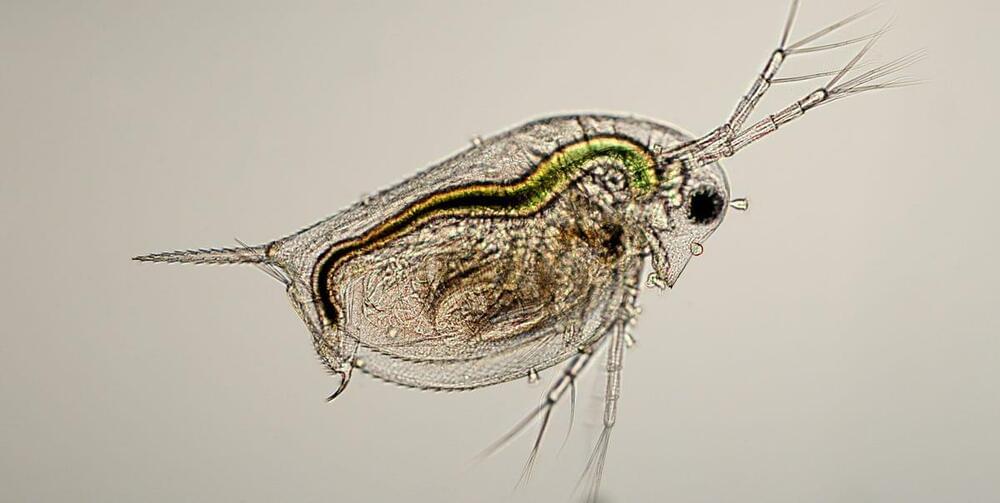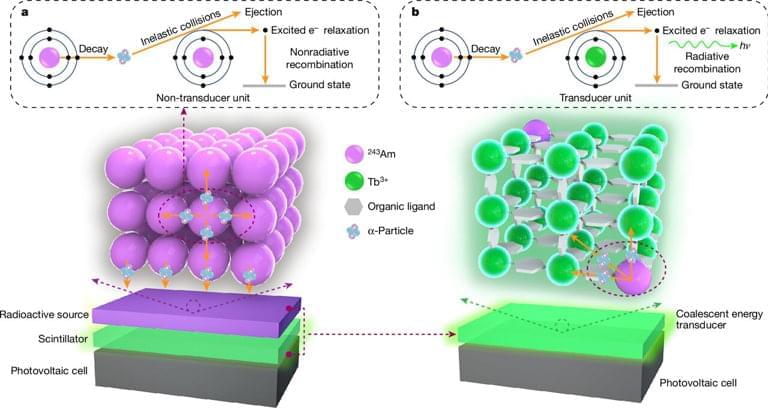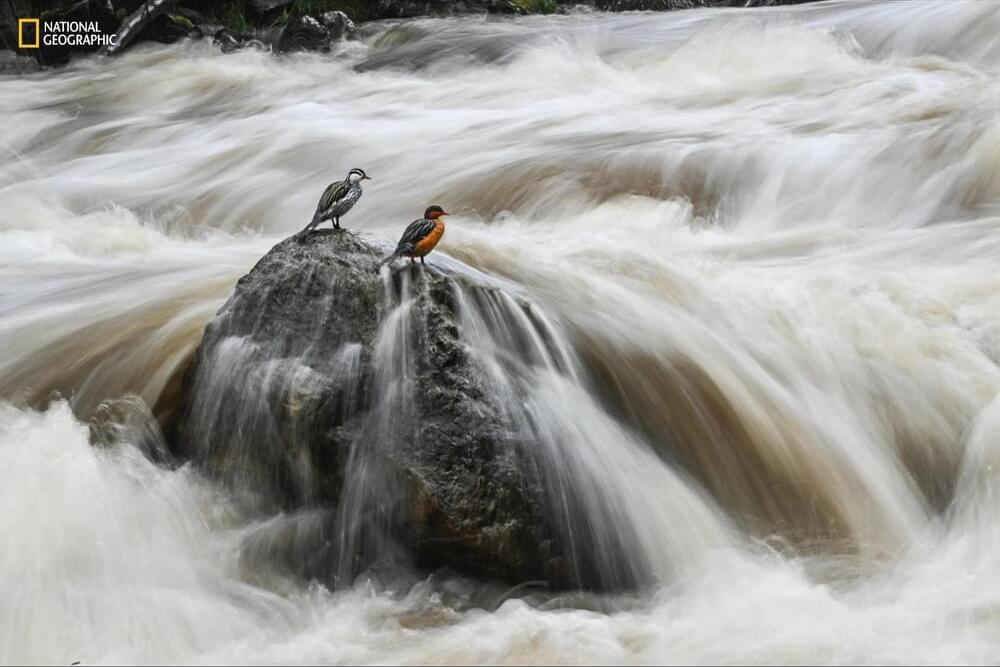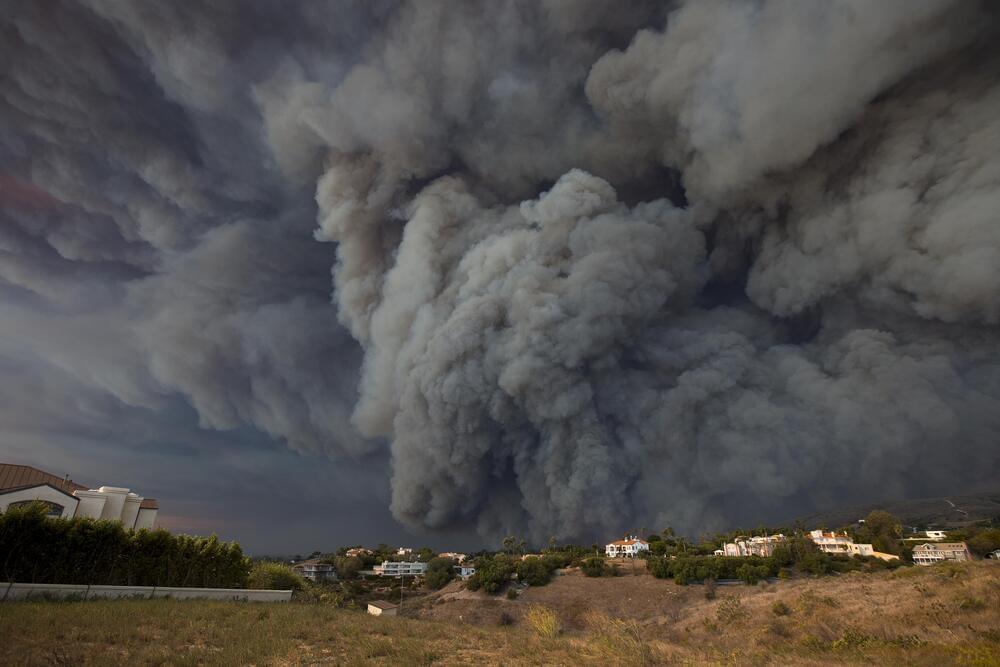Page 28
Sep 19, 2024
Researchers create tiny nuclear-powered battery thousands of times more efficient than predecessors
Posted by Genevieve Klien in categories: nuclear energy, physics
A team of physicists and engineers affiliated with several institutions in China has developed an extremely small nuclear battery that they claim is up to 8,000 times more efficient than its predecessors. Their paper is published in the journal Nature.
Sep 19, 2024
A quantum neural network can see optical illusions like humans do. Could it be the future of AI?
Posted by Cecile G. Tamura in categories: quantum physics, robotics/AI

Optical illusions, quantum mechanics and neural networks might seem to be quite unrelated topics at first glance. However, in new research published in APL Machine Learning, I have used a phenomenon called “quantum tunneling” to design a neural network that can “see” optical illusions in much the same way humans do.
My neural network did well at simulating human perception of the famous Necker cube and Rubin’s vase illusions—and in fact better than some much larger conventional neural networks used in computer vision.
Sep 19, 2024
How ‘Embeddings’ Encode What Words Mean — Sort Of
Posted by Shubham Ghosh Roy in category: futurism
When it comes to LLMs, you don’t need a dictionary to determine the meaning of a word — just statistics.
Machines work with words by embedding their relationships with other words in a string of numbers.
Sep 19, 2024
Nat Geo Leverages Cutting-Edge Technology To Bring The Amazon To Life
Posted by Genevieve Klien in categories: augmented reality, mapping
Storytelling has evolved beyond mere narration—it’s now about immersion, interaction, and creating a deep emotional connection. Few organizations understand this better than National Geographic, a brand renowned for bringing the natural world to life through visually stunning, fact-driven content. With their latest digital experience, “Into the Amazon,” National Geographic has raised the bar even higher, blending cutting-edge technology with unparalleled storytelling to offer audiences a front-row seat to one of the planet’s most vital ecosystems: the Amazon rainforest.
At a time when the world’s environmental challenges are more pressing than ever, National Geographic’s “Into the Amazon” doesn’t just inform viewers; it transforms how we understand the Amazon’s role in the global ecosystem. This article explores how innovative technologies—such as interactive 3D mapping, augmented reality, and immersive media formats —are being harnessed to deliver a uniquely engaging experience. It also reflects on the broader implications for the future of digital storytelling, where technology and narrative merge to create impactful, lasting impressions.
As digital media continues to dominate, audience expectations have shifted. Passive consumption is no longer enough—today’s audiences crave interaction, engagement, and experiences that go beyond the screen. Immersive storytelling, particularly in the environmental and scientific fields, has emerged as a powerful tool to captivate and educate.
Sep 19, 2024
People in California told to avoid leaving the house
Posted by Genevieve Klien in categories: habitats, sustainability
Officials in southern California are advising some residents against leaving their homes as wildfire smoke worsens air quality in the region.
On Monday afternoon, the National Weather Service (NWS) office in San Diego broadcast an air quality alert from the South Coast Air Quality Management District (AQMD). The alert warned of increased fine particle pollution from wildfire smoke across parts of southern California, and it is expected to remain in place until 11 p.m. local time Tuesday.
“If you smell smoke or see ash due to a wildfire, remain indoors with windows and doors closed or seek alternative shelter, if feasible,” the alert said. “Avoid vigorous physical activity and run your air conditioner and/or an air purifier. If possible, do not use whole house fans or swamp coolers that bring in outside air. Avoid burning wood in your fireplace or firepit and minimize sources of indoor air pollution such as candles, incense, pan-frying, and grilling.”
Sep 19, 2024
Elon Musk goes all Star Trek as his sight-giving Blindsight brain implant gets FDA ‘breakthrough’ clearance
Posted by Dan Breeden in categories: Elon Musk, neuroscience
Sep 19, 2024
The First ‘Zeta-Class’ Supercomputer Will Revolutionize Science in Just 6 Years
Posted by Zola Balazs Bekasi in categories: science, supercomputing
Sep 19, 2024
Sara Imari Walker: Using physics to rethink the definition of life
Posted by Paul Battista in categories: biological, physics
Sara Imari Walker is a professor of physics at Arizona State University and the author of a new book Life as No One Knows It: The Physics of Life’s Emergence. As I wrote in my review of the book, I’m a big fan of Walker’s work (full disclosure, we have collaborated before on a paper and a proposal).
The subject of her work and the new book is what might be called the “Physics of Life.” This is different from biophysics, which tries to account for specific physics aspects of biological processes. Instead, the Physics of Life has a more ambitious goal: to understand what separates living from non-living systems.
Along with her collaborators, Walker developed Assembly Theory, which focuses on “selection” and is a fundamental physics account for the difference between life and non-life. Assembly Theory quantifies complexity by measuring how many unique steps are needed to build a molecular structure. By identifying complex patterns that signify biological processes, this framework could help scientists detect life forms on other worlds — even those that may not look like anything we’re familiar with on Earth.
Sep 19, 2024
DNA stored on crystal could bring back humanity billions of years after extinction
Posted by Paul Battista in categories: biotech/medical, existential risks
British scientists have stored DNA information for an entire human on a crystal, which could be used to bring back humanity if we become extinct.
The team from the University of Southampton’s Optoelectronics Research Centre (ORC) used lasers to inscribe the data on a 5D crystal, which they said can survive for billions of years.
Unlike other storage formats, it does not degrade over time.

















